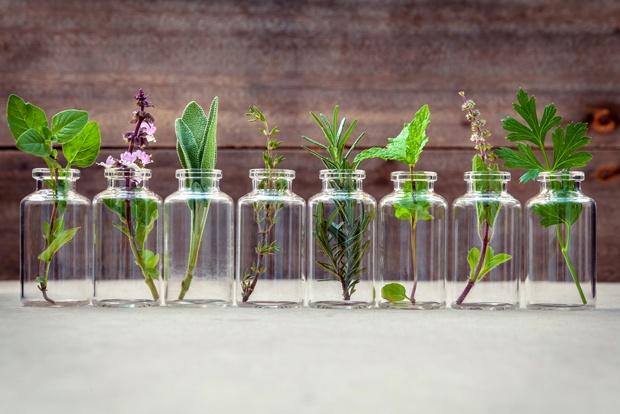
Have you heard the news? Eco-friendly-or “green”-is the hip way to be. Faced with a global-warming crisis, we’re all into sustainability…until it comes to our bodies, it seems. We recycle and use energy-efficient light bulbs, maybe even buy veggies at organic markets, but when it comes to the toxins we’re slathering on our skin, we tend to be much more “chemical-friendly.”
We’ve covered in other posts the dangers of toxic ingredients in skin-care and cosmetic products (especially if you’re going through treatment). Buying organic is one of the easiest ways to reduce your toxic overload. “But they’re so expensive,” you may say. Not always. Research and consultancy company Organic Monitor says that organic cosmetics are not necessarily more expensive than traditional products, and are often a lot cheaper than those in the premium category.
However, there’s no doubt you can find cheaper products. The question is, how much is your health and recovery worth to you? Applying cheap stuff to your face (like petroleum-based products), hands, hair, and body is a lot like eating fast food every day. It’s inexpensive, and it’s food, but it’s not good for you-and as we’re now finding out, it can often lead to obesity, heart disease and diabetes. Studies are discovering that toxins in our personal-care products are similarly dangerous. (Read our post on “Toxins and Skincare 101” or click here to read the “Toxic Truth” about out beauty industry.) Unfortunately, nobody’s banning the bad stuff, so it’s up to us to be more diligent about what we’re using.
What does “organic” mean, exactly? Similar to the way organic foods avoid high fructose corn syrup, hydrogenated oils, and the like, in favor of “real” ingredients like cane sugar, whole grains, and organically grown vegetables, truly organic cosmetics avoid toxic ingredients, preservatives and dyes in favor of more natural pigments, organically grown botanical extracts, minerals, and plant-based waxes. These ingredients-because they have to meet set standards from growth to pesticide use to processing to production-require more resources and labor-intensive processes, and can thereby be a little more expensive.
Products can either contain some organic ingredients, or carry a seal that signifies most of the ingredients are certified organic. You can learn more about the various certification seals in future posts to come but if you see one (like the USDA green-and-white seal), you can be sure the product is safe.
Jumping through all the hoops to get a seal can be an expensive and time-consuming process, however. Consequently, there are many companies that don’t carry one, yet still use a lot of organic ingredients. Then again, some products that say “natural” or organic may contain one natural ingredient along with several harmful ones. Bottom line: Read labels, look for minimal chemicals, and refer to the Cosmetic Database to check your product’s safety or click here to read our top 21 ingredients to avoid.
There’s no better time than when you’re going through cancer treatment to give organic a try. There are probably many changes you’ve had to make to live a healthier life-and changing your skincare is not as hard or overwhelming as you think. The aisles of whole-foods markets and health-food stores are filled with organic personal-care items. You’re willing to make some changes for the planet’s health. You may have even started eating organic food, or buying organic for your pets. How about taking care of what goes on (and into) your skin? It’s all part of lessening the toxic overload, getting on the road to recovery, and staying healthy.
Have a story to tell about how organic and natural products changed your personal-care regime? Do tell!

